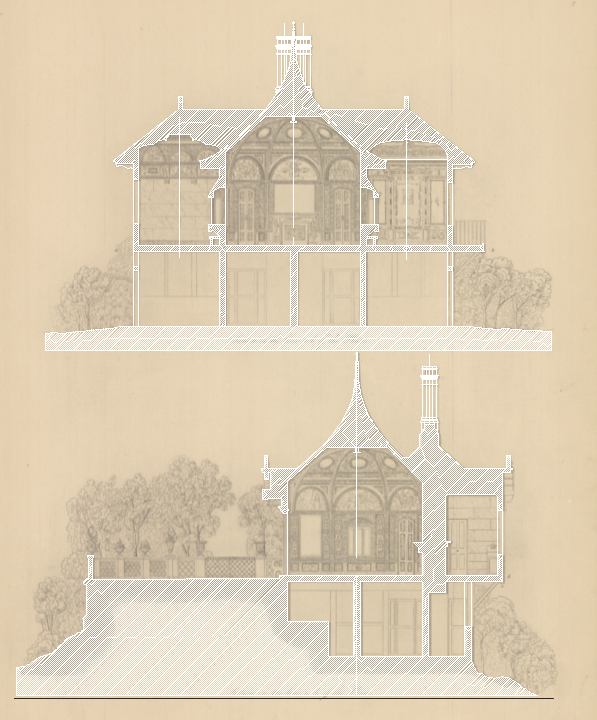Many of the initial materials for this project come from a large-format book, The Decoration of the Garden Pavilion in the Grounds of Buckingham Palace (1845) organized by L. Gruner. This book introduces the pavilion and documents its various architectural plans and artworks with an array of engraved views and depictions.
Our able graduate research assistants have now scanned the book and are redrawing the building on top of its pages. We were stunned by these initial drawings in AutoCAD superimposed on images of the book pages. These elementary steps on the technical side seemed profound movements on the project side. Suddenly we could see the palimpsest of history, the remediation of its representative technologies from the book to the screen. New techniques of inscription upon old ones, the virtual structure appearing from adding dimensions and layers from the plan views and profiles as represented in 1845.
Our colleague in architecture had prepared us for this: as in any new construction, the framing goes up quickly and everyone gets excited. But then the process slows way down and progress becomes less visible as the really hard work starts of determining details, resolving conflicts, conjecturing solutions. Though less immediately exciting, insights are won during that slow grind. Our GRAs move between AutoCAD, SketchUp, and Anna Jameson’s prose introduction to the pavilion in the nineteenth-century book. My colleagues in English move between illustrations of the pavilion and architectural plans. Together, we review the virtual object coming into focus and imaginatively inhabit it from our various fields. At intervals, the GRAs generate a “clay” model which strikes us with an uncanny solidity, a ghostly thing summoned into digital space from the records of the past.
We’re excited for each staff meeting. (In itself, this is a victory for the project.) Two weeks until the next one and what will we see? What will change as we start to project not only the building’s scale and textures but our own sense of its embodiment? What problems will emerge from the doing, how will they be modified by the archival materials and contemporary references we’re locating meanwhile? The more evidence and projection, the more questions arise.


